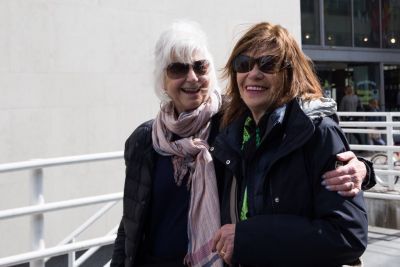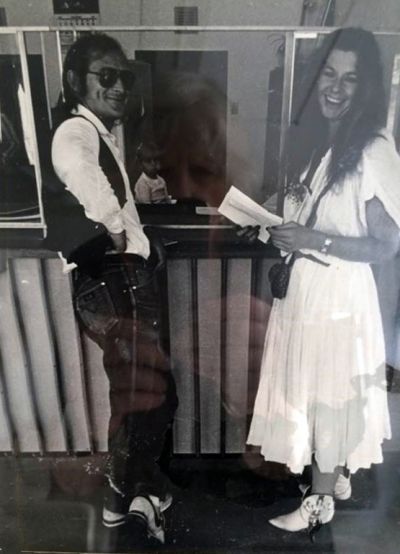Growing up Carol liked writing. She thought she might be a writer, but in her world women weren’t writers. They married well and didn’t work. If they worked it was in a glamorous profession. So she married at twenty, lived in London, and was a model. She thought she’d reached the pinnacle even though her sweet husband was homosexual.
However, 1970 saw the end of the marriage, and the beginning of her first novel, Curriculum Vitae, a story of a marriage and its dissolution, and the finding of love and sexual satisfaction. Through the auspices of a good friend, she found an agent. The agent didn’t manage to sell it, but Carol, sustained by drugs and alcohol, was undaunted.
1973 saw her as one of the three co-owner/chefs, of an all women vegetarian restaurant. The restaurant never made money, but it wasn’t the fault of the food. The food was great, but boyfriends, relatives, and friends ate for free. So while the restaurant was always full, no one was paying.
Carol began another novel called Holding Court. The novel was about the effects, often deleterious, that a celebrated and controversial psychiatrist has on the relationships of the couples that form his inner circle, as well as a portrait of London in the seventies. It was based on R.D. Laing and the people around him.
By 1977, Thatcherism was looming and London was becoming increasingly oppressive. So Carol moved to St. Tropez in the South of France. Her idea was to work hard all summer, and when St. Tropez emptied out have the winter for writing. She finished the novel and found an agent in London, who wanted her to edit. She took umbrage, it was her novel, and she wasn’t about to change a single word. He passed. In 1981, Carol returned to South Africa for a visit, and fell in love. She and her husband married after knowing each other for six weeks. They are still together.
During the next seven years, she worked as a freelance journalist on The Rand Daily Mail, the anti-apartheid newspaper, co-ran a food stall in a flea market, and wrote Pumpkin Fist, an apocalyptic novel of sex, violence and Apartheid, told through the lives of two families.
Paul Stopforth, Carol’s husband was a well-known, South African artist, whose work depicted the iniquities of Apartheid. In 1988 he was invited to be artist-in-residence at Tufts in Boston. At the time, it seemed that Apartheid would never end, and Carol and Paul grabbed the chance to leave and settle elsewhere.
After the Tufts residency was over they spent five months in Paris, where Carol taught English over the telephone to French business people. Sounds like phone sex, but it was not as interesting. Fortunately Tufts offered Paul another position and they returned to Boston.
Carol got a job at G.K. Hall a publishing house, and there came upon an article in Publisher’s Weekly about Don Congdon, a literary agent. He sounded terrific so she wrote him. She told him about Pumpkin Fist and he asked to see it. He liked it, took it on, and tried hard to sell it. Editors were complimentary, but there weren’t any takers. “Too South African,” was something she often heard.
So Carol wrote another novel. While doing research for what would become Pumpkin Fist, she’d become curious about how her father’s family got to South Africa from Lithuania. Deep Level Mining is about a family escaping the pogroms, and building new lives in a city that came into being through the discovery of gold. Congdon again tried to sell it. Without success.
Meanwhile G.K. Hall folded, and Carol became involved in a Buddhist psychology program, based on kindness and compassion. During ten years, the main client was a talented, brilliant, maddening schizophrenic woman. After she died Carol wrote her first non-fiction book, Eileen and Windhorse. Congdon passed and Carol couldn’t place it.
Some years later, Carol became the first cook at a fledgling, Buddhist meditation, retreat center. Cooking at the retreat center was an extraordinary experience, so Carol decided to write a recipe book. When she couldn’t make it work, she decided to write about the way the kitchen came into being. That didn’t work either, but it made her think about all her adventures with food. That book was written, rewritten, and abandoned many times. But eight years later, fortified by the input from two writer friends, I was ready to begin writing my story.
Carol’s life with her family, as well as growing up in South Africa during the Apartheid years are the basis for the first book of a memoir trilogy. In "Lost Girls," Carol writes about a beautiful mother damaged by the Holocaust, a father whose love of gambling supersedes his love of family, and Carol the daughter, recipient of the mother’s rage and the father’s dissolution, and the keeper of a secret of a sister left behind in Czechoslovakia.
Volume two is set in London and St. Tropez. On the threshold of adulthood Carol marries a homosexual man, and spirals from the glamorous world of modeling and drugs, to the daringness of drug smuggling, and even greater risks.
The final volume begins at the end of the eighties, when Carol and her husband travel to Boston in the US. She embraces a spiritual path, meets a teacher, and at at fifty-seven years old becomes a psychotherapist. It is in Boston that she ultimately discovers what she has been searching for. She is home.





